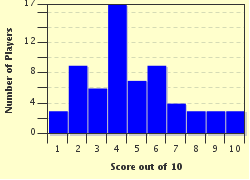Quiz Answer Key and Fun Facts
1. One of the first electronic computers, located in Philadelphia, occupied 167 square metres, weighed 27 tons and consumed 150kW of electricity. What was it called?
2. Claimed by some to be the first electronic computer, the "ABC" was invented in 1942. Oddly enough 'C' stands for Computer, but what do the letters 'AB' stand for?
3. During World War II the British developed a machine for code-breaking the Lorenz machine ciphers used by the Nazis to encrypt messages between their senior military leaders. Alan Turing was involved in its design, and it is another contender for the title of the world's first electronic digital computer. What was it called?
4. But wait, there's more! The strongest contender for being the first programmable electronic computer is the Z3. Which German engineer created the Z3 in 1941?
5. This mathematician, the only legitimate child of the poet Lord Byron, worked closely with Charles Babbage on his Analytical Engine. She is incorrectly reported to have created the first algorithm intended to be carried out by such a machine, and has therefore been called the first programmer. What was her name?
6. Reputed to have invented the programming language COBOL, Grace Hopper was extremely influential in its development and in promoting its widespread use. She is said, incorrectly, to have invented what common computing term?
7. During World War II, the Hollywood star Hedy Lamarr and the composer George Antheil patented a technology that would help prevent the jamming of radio signals sent to torpedoes. What was the technology called?
8. Doug Engelbart is credited with inventing the first computer mouse around 1963 to 1964 while working at the Stanford Research Institute. It had two perpendicular metal wheels to enable detection of movement across a surface. What was the case made of?
9. What did the Norwegian computer pioneer Pål Spilling do in 1988?
10. Announced in 1983, but not released until 20 November 1985, Microsoft Windows 1.0 had another name during its development. What was it?
Source: Author
UUizard
This quiz was reviewed by FunTrivia editor
rossian before going online.
Any errors found in FunTrivia content are routinely corrected through our feedback system.

